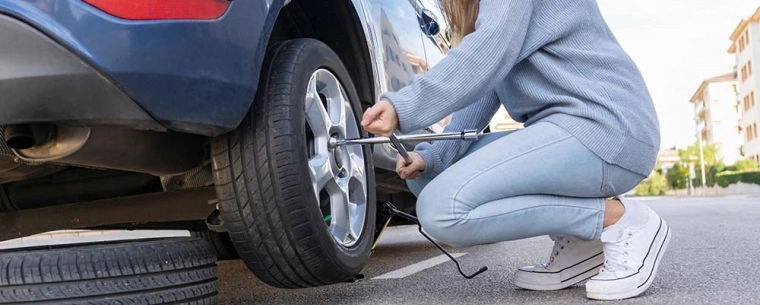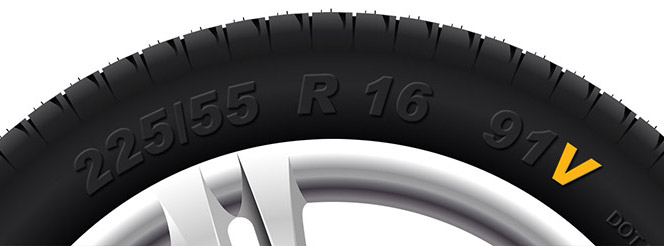How to Find Jacking Points on Your Car
Published on: Wednesday, 17 August 2022 | Author: Jack Dreyer
For almost anything mechanical, or even to easily inspect a tyre, you’re going to need to jack up your car. But for many car owners, this is a mysterious, often worrying task. The confusion often arises first when people become unsure of where the jacking points even are on their car or van.
If you fall under this category and are unsure of where to locate your vehicle’s jacking points, here’s everything you need to know about jacking your vehicle up.
How to be safe when jacking up your car
When it comes to something like inspecting or replacing a tyre, you’ll only ever really need to jack up the car or van on that corner. This is one of the safest ways to jack up a car because the other three wheels being on the ground gives it a lot of stability.
For work such as replacing or patch-repairing an exhaust, you’d usually have to get the whole back end of the car off the ground in order to get under it easily enough. If you only have one jack then this is to be strongly avoided as you have to jack from the centre of the car, which can make it very unbalanced and result in the car tipping over.
If this is your first time jacking a car up, we highly recommend only proceeding if you’re going to be doing something like changing a tyre or checking the tyre condition.
Where are the common jacking points on a car?

With the sheer variety of cars on the road these days, there isn’t a universally-built jack point, but there certainly are clues you can use to help you on the way.
The best place to start is by looking in your vehicle’s user manual or maintenance guide. If you don’t have access to that any more, though, then start by looking at the chassis around each wheel. What you’re usually looking for is a reinforced part of the chassis.
Now, don’t just go jacking from anywhere because you can bend or puncture parts of the underside – which is not a cheap repair! Older vehicles (from the “olden days”) were usually constructed on top of a clearly visible frame – you can’t miss them: big clunky bars running the whole length of the vehicle.
Most modern cars, however, in the interests of fuel efficiency and other factors, usually use what’s called ‘unibody construction’, which means the whole bottom of the car is welded together to give it strength. But the individual components are much thinner and weaker. Therefore, they don’t have frames as such, but they do usually have strips of metal running on edge along each side of the car.
The jacking points here are usually made by doubling up on the sheets to reinforce the area, as well as including small notches to help stop certain jacks from slipping as the car is being jacked.
What are the different types of jack?

When it comes to getting your car off the ground, you have a few options of jacks. The main types of jacks are:
Hydraulic bottle jack
These are small and compact, but don’t usually jack as highly as other types of jack – so aren’t usually suitable for SUVs & 4x4s that sit far further up from the ground.
These are great for normal use as they can be easily stored in your car’s boot – but they can be unstable because of their small surface area, so it’s worth also packing a sturdy baseplate made from hardwood ply or metal.
Hydraulic trolley jack
Mechanically, hydraulic trolley jacks work in the same way as bottle jacks but are able to be rolled on four wheels so are considerably more stable. On the other hand, they’re quite large and bulky, so aren’t really practical to keep in your car.
Scissor jack
With the growth in popularity of run-flat tyres, scissor jacks aren’t as common as they used to be, but can still be found in the spare tyre compartment occasionally. That’s because they used to come as standard in many vehicles for emergency repair. We don’t recommend using them if you can avoid it, especially not for anything other than changing a tyre because they can be really prone to slipping over.
How to jack a car up
Once you’ve found the jacking points, simply place your jack underneath and get going. You’ll usually find that you need to get the head of the jack to almost touch the jacking point and then adjust position slightly to begin putting pressure on the jacking point.
Some people like to use a piece of wood to help protect the jack head and jack points, just make sure that you line up the grain direction of the wood at a right angle to the jacking point – or it’ll split the wood and could cause the car to topple!
Once the jack starts to get locked in by the pressure, start to jack more slowly. It’s often surprising how little the car needs to come off the ground to be able to get a wheel off. Essentially just enough to take the pressure off the wheel. You’ll know you’ve lifted the car enough when you can roll the wheel.
Now, if you’re replacing a tyre or removing the tyre entirely for a brake inspection, it’s a good idea to put the removed tyre underneath the car – so that if the jack or jack stand slips, the car has something to stop it other than the floor (or whatever limb you have under there).
Book an appointment at your local Tyre Pros centre
If you’re not feeling confident with jacking your car up, it’s best to instead book an appointment at your local Tyre Pros centre to have any remedial work done. It’s not worth risking serious damage to you or your vehicle!




